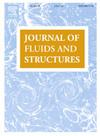Identification of low-wavenumber wall pressure field beneath a turbulent boundary layer using vibration data
Abstract
Although the most energetic part of the wall pressure field (WPF) beneath a turbulent boundary layer (TBL) is within the convective region, this region is mostly filtered out by the structure when excited by a low Mach number turbulent flow. Therefore, structural vibration is primarily induced by the low-wavenumber components of the WPF. This highlights the importance of an accurate estimation of the low-wavenumber WPF for predicting flow-induced vibration of structures. Existing semi-empirical TBL models for the WPF agree well in the convective region but significantly differ from one another in estimating the low-wavenumber levels. In this study, we aim to investigate the feasibility of estimating the low-wavenumber WPF by analyzing vibration data from a structure excited by a TBL. The proposed approach is based on the relationship between the TBL forcing function and structural vibrations in the wavenumber domain. By utilizing vibration data obtained from a structure excited by a TBL and incorporating the sensitivity functions of the respective structure, it is possible to estimate the cross-spectrum density of the pressure fluctuations in the wavenumber domain. To demonstrate the effectiveness of the proposed method, an analytical model of a simply-supported panel excited by a reference TBL model is employed. The vibration data of the panel is then used in an inverse method to identify the low-wavenumber levels of the pressure fluctuations, which are then compared to those of the reference TBL model. The performance of the proposed method is examined through a parametric study and virtual experiments.

 求助内容:
求助内容: 应助结果提醒方式:
应助结果提醒方式:


